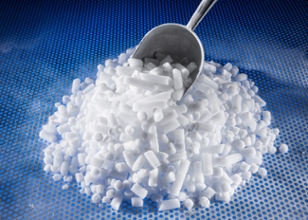Dry Ice Shipping
Dry ice is classified by DOT and IATA as a “miscellaneous” hazard, Class 9. Dry ice is considered hazardous during transportation for the following reasons:
- Explosion hazard: Dry ice releases a large volume of carbon dioxide gas as it sublimates. If packaged in a container that does not allow for release of the gas, it may explode, causing personal injury or property damage.
- Suffocation hazard: A large volume of carbon dioxide gas emitted in a confined space may displace oxygen and create an oxygen deficient environment.
- Contact hazard: Dry ice is a cryogenic material that causes severe frostbite upon contact with skin.
Packing Guidelines for Dry Ice
Do not use plastics that can be rendered brittle or permeable by the temperature of dry ice. Use commercially available packaging systems intended for dry ice shipments. Packages must allow for release of carbon dioxide gas. Dry ice must never be sealed in a container with an airtight seal such as container with a threaded lid or plastic cooler. The maximum allowable net quantity of dry ice allowed per package is 200 kg
Required Markings for Dry Ice
Markings and hazard labels for dry ice are required when the package is sent by air, water, or when transported by commercial carriers and couriers by land (ex: Fed Ex, Airborne Express, etc). The US Postal Service will NOT transport dry ice.
The labels and markings required for dry ice are used in addition to any other labels and markings required for other hazardous materials in the package.
- Class 9 Miscellaneous hazard label
- Proper shipping name and UNID Number: “Carbon dioxide, solid” or “Dry ice” and UN1845
- Net quantity of dry ice
Airway Bill for Dry Ice
Remember to “declare” the dry ice on your airway bill. Dry ice is considered a “Dangerous Good”, however you do not need to complete a “Shippers Declaration” form if the only hazardous material in the package is the dry ice.



